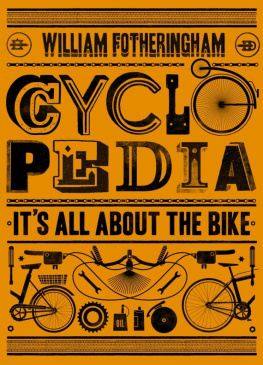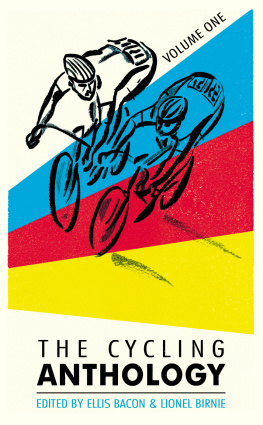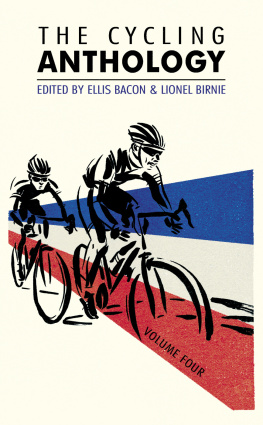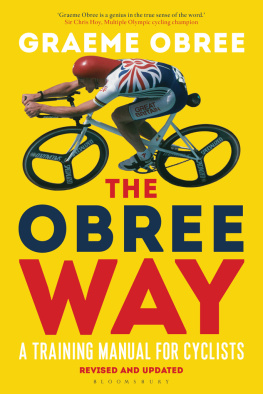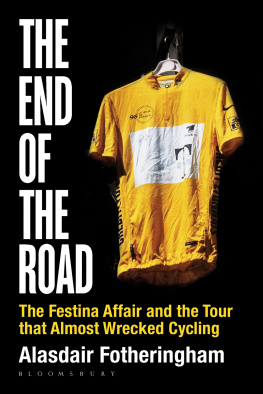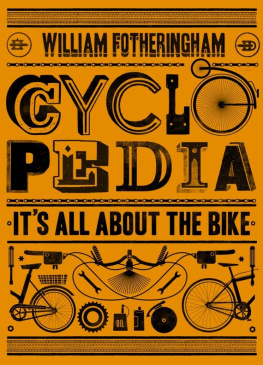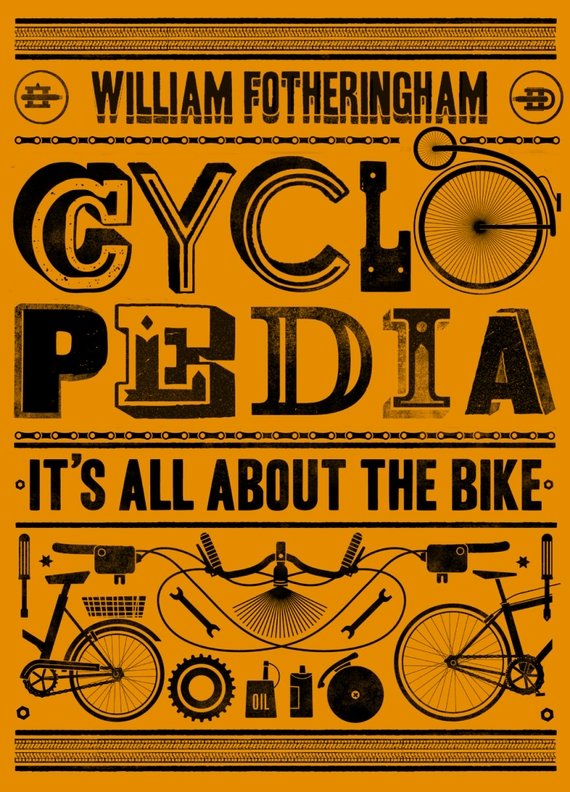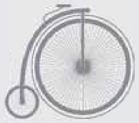ABDUZHAPAROV, Djamolidin
(b. Uzbekistan, 1964)
Squat, tree-trunk thighed sprinter from Uzbekistan who was one of the biggest stars to emerge from the Eastern bloc after the fall of the Berlin Wall. Abdu first came to prominence in the British MILK RACE, winning three stages in 1986, but it was in the 1991 TOUR DE FRANCE where his unique style grabbed world headlines: he put his head down low over the front wheela style later adopted to great effect by MARK CAVENDISHand zigzagged up the finish straight, terrifying opponents and onlookers.
He took two stages in the 1991 Tour but came to grief in dramatic style as a third win beckoned on the Champs-Elyses: after colliding with an oversized cardboard Coke can standing against the barriers he somersaulted over the bars and rolled down the road. He had to be helped over the line, and was eventually awarded the points winners green jersey three months later. This led to him being nicknamed the Terminator, because he got back up each time he was knocked down.
He went on to have a memorable feud with Italian sprinter Mario Cipollinisend him back to Russia was Cipos lineand won a total of nine stages and three green points jerseys in the Tour. His career came to an end in 1997 after he tested positive for Bromantan, a drug used by Russian air force pilots; he retired to live on Lake Garda, where he tends pigeons.
(SEE NICKNAMES FOR OTHER BIZARRE CYCLING MONICKERS, AND EASTERN EUROPE FOR MORE INFO ON THE ORIGINS OF ABDU AND HIS PEERS)
AERODYNAMICS If the strength of any cyclist is a given on a particular day, several key variables determine how fast he or she can travel: friction (resistance within the bearings and chain), the rolling resistance of the tires on the road, gravity, and air resistance. Of the four, air resistance is the hardest to overcome and has the greatest effect.
Air or wind resistance increases as a square of a cyclists velocity; for every six miles per hour faster a cyclist travels, he must double his energy output. It is estimated that over 15 mph, overcoming wind resistance can account for up to 90 percent of energy output. Estimates vary as to how much a contrary wind can affect speed: some say it slows a cyclist down by half the windspeed (e.g., 2 mph for a 4 mph wind). Roughly a third of air resistance is encountered by the bike, roughly two-thirds by the rider.
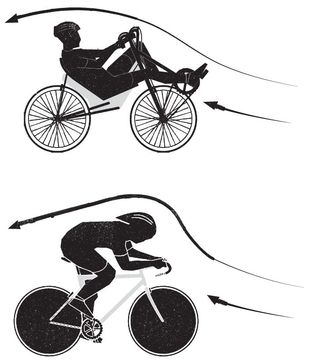
The most obvious way to counter air resistance is by sheltering, be it merely by riding close to the hedge when the wind blows or choosing valley roads on a windy day. Riding in the slipstream of another cyclist uses up about 25 percent less energy depending on the size of the rider in front (team pursuit squads look for four cyclists about the same height and width to take advantage of this) and is the key to most of the tactical niceties of road and track racing. A bunch of cyclists riding together offers even greater shelter, as does a pacing motorbike such as a DERNY. Before motor vehicles got too quick, cyclists like FAUSTO COPPIwould go truck-hunting to get in speed training.
Changing handlebar position produces immediate results; riding with the hands on the drops, not the brake levers, flattens the torso and increases speed by between 0.5 and 1.25 mph. Tucking in any loose clothing helps as well. Shaving the legs produces negligible benefits (see HAIR for other shaggy-cyclist stories), but wearing an aerodynamic teardrop-shaped helmet helps considerably, as does wearing a one-piece skinsuit rather than separate jersey and shorts, and putting covers over the shoes.
So much for the basics. Most recent aerodynamic developments can be traced back to FRANCESCO MOSER and his attempts on the HOUR RECORD in 1982. The Italian used a Lycra hat, shoe-covers, a plunging frame to lower the angle of his torso and reduce the profile of the bike, and solid disc wheels. All became widely accepted ways of reducing air resistance.
Tri-bars, so-called because they were first used by triathletes in the US in the 1980s, were the next major development. They provided the most dramatic recent illustration of the power of aerodynamics when GREG LEMOND used a pair to overturn a 50 second deficit in the final time trial of the 1989 TOUR DE FRANCE. The loser, LAURENT FIGNON, was not riding the extensions, which allow the user to flatten the torso and push the arms forward along the lines of a downhill skiers tuck.

